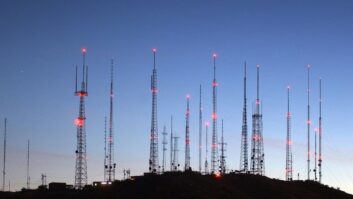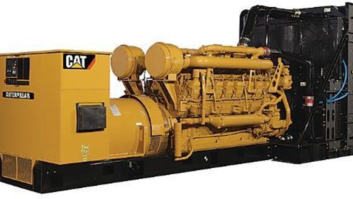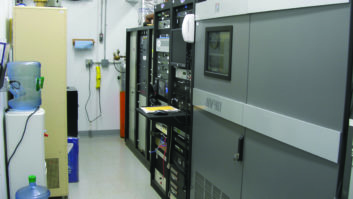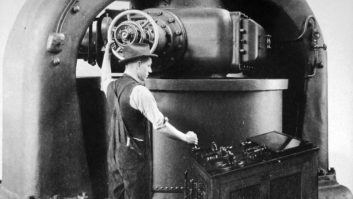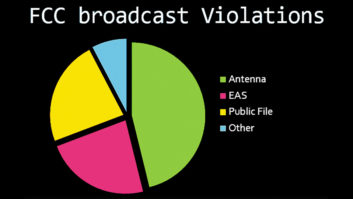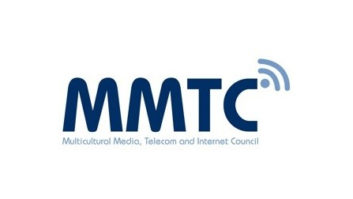As with most things related to technology, the broadcast engineering ecosphere has become an increasingly complex workspace. New technologies appear and need to be integrated with legacy systems, existing technology is always in a state of flux, while regulations and compliance can also be a moving target.
Despite all this, there are still just 24 hours in a day. The best strategy for the overworked engineer may be to delegate some of that workload whenever possible.
Managing tower lighting systems might be one such task. At least LumenServe thinks so.
The eight-year-old company, based in Austin, Texas, provides services to tower owners. The people behind the company include an original investor in Crown Castle and the co-founder of American Tower.
Its flagship offering is “Tower Lighting as a Service,” or TLaaS (both of which are registered trademarks).
It describes TLaaS as “a unique approach where we will buy a new LED system for your tower, install it, maintain it, protect it against catastrophic events and do the compliance and monitoring.”
Radio World talked with Bear Poth, president and CEO of LumenServe, about how rules and technology for tower lighting have changed, how those changes can work to your benefit and how TLaaS works.
Recent trends
Poth begins by noting that the FAA rules for tower lighting with incandescent lamps and painted towers remained virtually unchanged for decades, but that the advent of xenon strobe, and later LED technology, changed that.
The most recent revision, Circular M, is largely concerned with the deployment of infrared (IR) LEDs. This change was largely brought about by the use of night-vision goggles by pilots. Incandescent tower lights are visible with these goggles, due to their heat signature, while conventional LEDs are not, because they emit very little heat. This presents a hazard to aviation.
Towers meeting existing standards are grandfathered in and need not be upgraded to IR standards. However, new lighting installations are required to meet the IR spec.
An exception exists if the mid-point LED beacon should fail on a tower; if that happens, both the mid-point and top beacons need to be replaced with IR spec devices.
“Otherwise,” he says, “a pilot with night-vision goggles might see the IR mid-point beacon but not the top beacon, and think the mid-point is the top of the tower.”

The previous standards, contained in Circular L, were released in 2016. One section includes the Avian Standard. A 2012 study showed that steady red lights attract birds, increasing fatalities. Updated standards require any sidelights to be flashing, although many configurations no longer require sidelights.
“Updating is a win-win where you can reduce your tower loading and energy consumption and become more environmentally friendly at the same time,” Poth said.
These new standards can be a lot to absorb. LumenServe has reduced this mass of text-based information into a visual format, and made it available as a complimentary poster, which is available upon request.
Lighting advances
Tower lighting technology comes in three types. According to Poth, the majority of towers still use traditional incandescent bulbs, well-proven but high in power consumption. Downsides also include short life, RFI/EMI interference and light pollution.
Second are Xenon gas-filled tubes that emit a blue glow when excited by an electrical discharge. These also use considerable power.
The third option is LED technology, which is the smallest light source available. LEDs have the advantages of no fragile parts, no corrodible contacts, RoHS compliance, shock and vibration resistance and long life. Most important, LEDs are about 90 percent more efficient than incandescent bulbs, Poth said.
Today’s medium-intensity LED flash heads can contain both red and white LEDs and are designed for low light pollution. This means the optics project most of the light horizontally, and very little is visible at ground level.
High-intensity LEDs are required for non-painted towers over 700 feet, and are configured as three separate arrays on the tower. Each array covers 120 degrees. Each array in turn has three elements. Each of these elements covers 40 degrees.
Poth said that the new FAA regulations can work to a tower owner’s advantage.
One such instance is painted towers. The average time between paintings is seven years, even less in harsh environments. The cost to paint a tower can be $30 per foot or more, not counting down time and coordination. Painted towers require paint inspections, another costly expense. Finally, sidelights on painted towers attract migratory birds, leading to birdkill. Another expense, the cost for tower climbers, has increased significantly in recent years, a trend that’s likely to continue.
All of these can be eliminated by transitioning from an FAA “A-style” painted tower to a “dual-mode” tower.
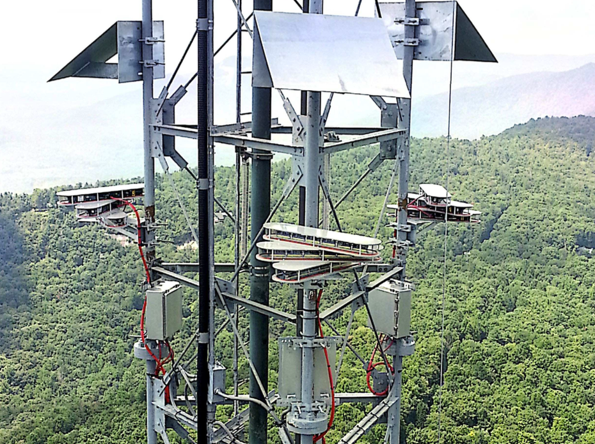
An A-style tower is marked with alternating aviation orange and white paint bands for day marking and red lighting for night marking, while a dual-mode tower is marked with white lights during the day and red lighting at night and does not need to be painted for obstruction marking purposes.
Poth said LumenServe will assist with the required FAA paperwork to update the obstruction marking and lighting determination for a customer site, and if the tower has sidelights, those will often be eliminated, so there will be fewer lights and LEDs, and the tower will no longer need to be painted for obstruction marking purposes. This updated filing also aids the FAA in bringing each site to the most current circular, he said.
LumenServe uses the customer’s site internet connection to provide monitoring service of the lighting system and for remote diagnostics. But what happens when there is no internet service?
“We use our proprietary machine-to-machine technology to interface with tower lighting equipment,” he said.
“The backhaul is via a mobile connection, and our gear works with AT&T, Verizon and T-Mobile. Our service is provided to the customer for $10 per month.” He adds that this same M2M system is also used to get telemetry signals across hot ungrounded AM towers.
Currently, LumenServe services about 800 towers in the United States. Poth said its customer base breaks down into three groups. The first includes radio/TV broadcasters and communications companies. The second consists of companies that lease tower real estate. Finally, there is the public space, including emergency management services, police departments, and local and county governments.
Types of service
There are three options for which LumenServe quotes services. The first is full-on TLaaS, where LumenServe buys, owns, maintains and monitors the tower lighting system. The customer pays a flat service fee each month for a five-year term. At the end of five years, the customer has the option to renew annually with a modest predetermined rate increase.
Second is a TLaaS option, where the asset reverts back to the tower owner after five years.
Finally, LumenServe offers the traditional business model where the tower owner makes an upfront purchase of the tower lights and installation, and may elect to add additional support services.
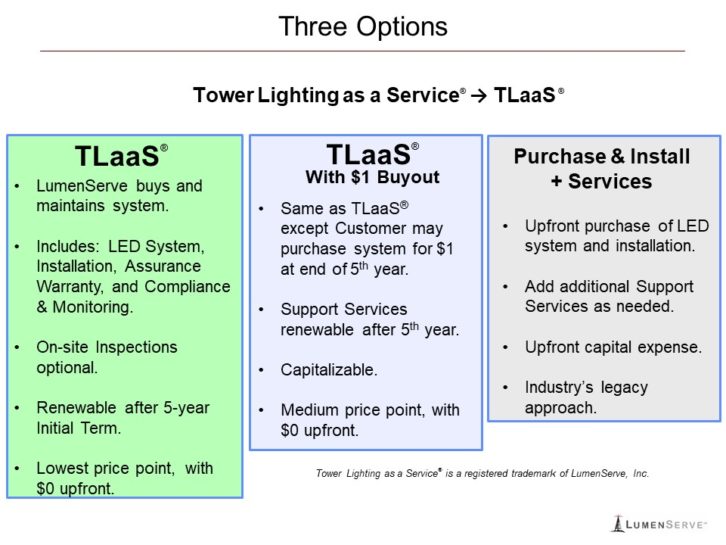
It would seem that LumenServe’s success hinges not only on being able to take the burden of tower lighting management off the engineer’s shoulders, but on doing so at a competitive price. How does that happen?
“Tower lighting is all we do, so we’re very focused” says Poth. “We’re able to get through the compliance and installation hurdles in a lot less time than most station engineers. We buy all our equipment in bulk at discounted prices.
“What a lot of people don’t realize, is the greatest cost of a tower lighting system is not the purchase price or installation, but maintenance and compliance, and that’s another area where we leverage technology.”
Since LumenServe polls the customer’s lighting system every five minutes, the average time to detect an outage is two and a half minutes. The average time to post a Notice to Airmen (NOTAM) is 11 minutes. Repairs are completed in an average of four days. There are two Network Operation Centers, one virtual and one in Austin.
